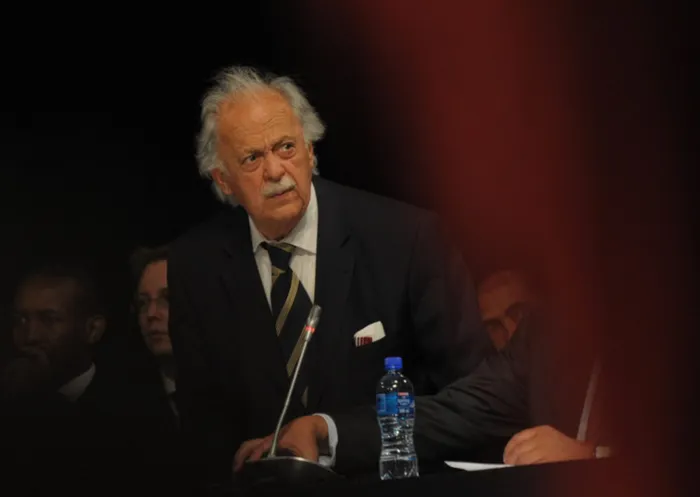Marikana cops ‘had no licence to kill’

011012. Rusterburg Civic Centre, North West. George Bizos during the public hearing of the Marikana Commission of Enquiry to investigate the Marikana tragedy at which 44 people were killed and scores injured. 554 Picture: Dumisani Sibeko 011012. Rusterburg Civic Centre, North West. George Bizos during the public hearing of the Marikana Commission of Enquiry to investigate the Marikana tragedy at which 44 people were killed and scores injured. 554 Picture: Dumisani Sibeko
Rustenburg - Police did not think they had a licence to kill when they shot dead 34 miners in Marikana last year, the Farlam Commission heard on Thursday.
The suggestion that this might have been their state of mind came from George Bizos, SC, for the Legal Resource Centre and the Bench Marks Foundation.
He was cross-examining Maj-Gen Charl Annandale, who led the police special tactical operations team.
Bizos referred to 10 killings and assaults the week before the August 16 shooting, when he asked: “Are you saying the commission of these crimes was a licence for police?”
Annandale responded: “A licence for what?”
Bizos: “Shoot people dead, shoot people and seriously wound them.”
Annandale denied this, saying: “Certainly not.”
The commission is holding public hearings at the Rustenburg Civic Centre into the shooting and other events at Marikana in August 16.
Bizos questioned the police's decision to send members of specialised units, the National Intervention Unit, the Tactical Response Team and the Special Task Force, to Marikana.
He said Public Order Police (POP) were better suited to dealing with crowd management, than the specialised units.
Annandale said the specialised units had different roles to play in the operation, and were not charged with the crowd management aspect.
Bizos said there were nearly twice as many special unit members as POP members at Marikana on August 16 and asked Annandale to account for this.
Annandale said that the police's Standing Order 262, which guided operations involving protests, allowed for reserve units to be brought in as a show of force.
“Such a show of force has in the past worked wonderfully for us... without having to employ any offensive action.”
Earlier, Bizos argued that the police had changed their version of the events at Marikana to better fit the testimony of expert witnesses, who were critical of the police strategy.
Bizos claimed the police plan and police statements before the commission referred to the protesters as a homogenous group.
He put it to Annandale that in his version of events, the police were particularly concerned with disarming a smaller, more militant group of around 300 protesters.
“Where in the (police) plan is this (idea) of two different groups being treated separately?” he asked.
Annandale said the overall plan provided for the actions of groups and individuals within the larger collective group.
Bizos referred the commission to a statement made by Brigadier Adriaan Calitz, who heads the North West operational response service.
In the statement, Calitz refers to the protesters as “acting as one group, and all of them associated themselves with the actions of each other... 1/8with 3/8 the same intention and goal”.
Ishmael Semenya, for the police, said there was no contradiction, as Calitz also referred to the smaller, “very aggressive” group.
Bizos maintained that references to the smaller group amounted to a “new version” of events.
“We will submit that you (Annandale) are following the example that... policemen do not contradict each other, they support each other irrespective of what the facts are.”
Annandale objected to this: “Mr Bizos cannot make judgement over my integrity... I will leave that decision to be made by the commission.”
The hearings continue. - Sapa